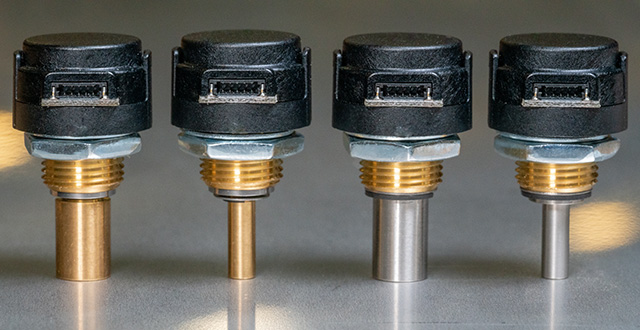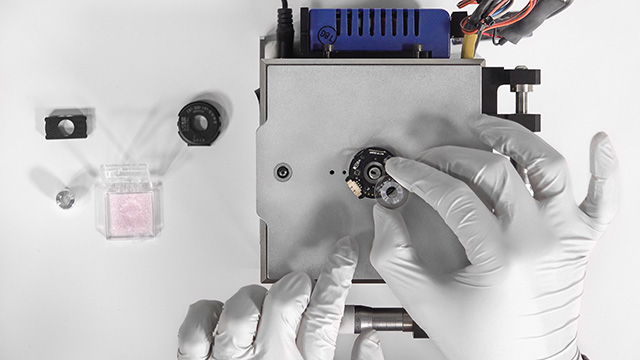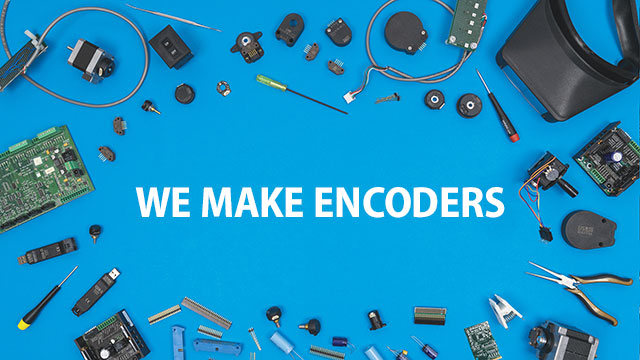Encoder Resolution, Accuracy and Precision
If you need an encoder that can measure very small distances, which of the following is most important to you: high accuracy, high precision or high resolution?
If you said "high resolution," nice work. You got the answer right. If you didn't, don't worry you aren't alone.
In this post, we're going to discuss the actual meaning of resolution, accuracy and precision when it comes to encoders to clear up any confusion and help you select the best encoder for your application.
Josh from our tech support team says that most of the time when people call asking for a "high accuracy" or "high precision" encoder, they are actually looking for an encoder that can measure small distances. In other words, they’re looking for a high resolution encoder.
Why the misunderstanding? Accuracy and precision are often used informally in the everyday world, as if they mean the same thing. Someone might say that measuring to the nearest sixteenth of an inch is more accurate (or precise) than measuring to a quarter of an inch, for example.
In the world of encoders, however, accuracy and precision have nothing to do with how small or fine the level of detail measured. That, instead, is a function of resolution.
Let's get into the details.
What is encoder resolution?
Resolution is the number of counts per 360 degrees of rotation for a rotary encoder or per inch for linear encoders. For an optical encoder this can be either lines that are physically printed on the disk or strip or interpolated resolution.
An optical encoder, for example, has lines and windows printed on the disk or strip. As the number of line and window pairs increase, they become smaller and closer together, and smaller distances can be measured. This results in higher resolution.
We list resolution in Cycles Per Revolution (CPR) for rotary encoders, or in Lines Per Inch (LPI) or Cycles Per Inch (CPI) for linear encoders. These terms are used for all encoder types—optical, magnetic and capacitive.
You can use higher resolution to measure very small distances, but more resolution isn’t always better.
Josh from tech support says often times people he speaks with by default just go for the highest resolution available with whatever encoder they are interested in buying. That’s not something that he always recommends.
"You want to make sure you pick the right tool for the job," he said.
Imagine going on a road trip and trying to calculate how far you traveled in inches (or centimeters for our metric friends) rather than in miles (or kilometers). Sure you can convert the smaller unit of measurement into the larger one, but you would be dealing with more information than you actually need and would be spending unnecessary brain power to do the calculations.
It's similar with encoders.
In general, higher resolution encoders are useful in applications where precise positioning is critical, when motion occurs at extremely slow speeds or when very small distances need to be measured.
Lower resolutions are typically better where approximate positioning is acceptable or in high-speed applications where bandwidth limits could be an issue.
To determine the resolution you need, first calculate the smallest increment you must measure. That will determine your minimum resolution. You can increase your resolution from there to a number that might work better for your data acquisition system, or maybe to a stock resolution. Just keep in mind the advice in the previous paragraphs—make sure the resolution will work in your application. For more details, see our white paper on resolution, accuracy and precision of encoders.
How is encoder accuracy defined?
Accuracy is a term used to describe the difference between target position and actual position. Encoder accuracy is specified in degrees, arcminutes or arcseconds.
Within the encoder itself, accuracy can be affected by several variables.
- Imaging: location of the lines on the disk must be exact, or accuracy will suffer
- Installation: mounting an encoder hubdisk off center on the shaft can decrease accuracy
- Size: an encoder with a larger disk will be more accurate than one with a smaller disk
External to the encoder, other mechanical parts of the application affect system accuracy. Gear backlash, leadscrews, shaft and bearing play can add up and have much more of an effect than the encoder's accuracy contribution.
What is encoder precision?
Precision is a term that describes repeatability. It's the amount that successive measurements at the same location differ from each other.
If an encoder is off by 2 degrees at a particular position, but it is always off by the same 2 degrees at that location, then the encoder has good precision.
Most encoders are reasonably accurate and precise. Of the three terms we've discussed, people are usually most concerned with resolution, then accuracy, and finally precision.
Encoders provide the resolution, with the number of lines on their optical components (disk and sensor); accuracy is related to alignments in the mechanical system that affect the encoder; and precision can be a product of either—or probably both. Josh from tech support says that issues about precision rarely come up when people call.
Putting it all together
In daily life, normal people use resolution, accuracy and precision differently than we do in the encoder world. We hope the descriptions above and the summary below will prove helpful in your understanding of encoders.
- Resolution - The smallest distance that can be measured
- Accuracy - The difference between target position and actual position
- Precision - The difference between repeated measurements at the same location
- How they are related? They are NOT related!
If you haven't already, check out our video on the difference between resolution, accuracy and precision at the top of the page to go a little more in depth and to see all of this illustrated through archery.
Want even more? Please see our White Paper: Resolution, Accuracy and Precision of Encoders.
More in News
Stay up to date
Sign up for our newsletter to stay up to date with our product updates, blog posts, videos and white papers.


